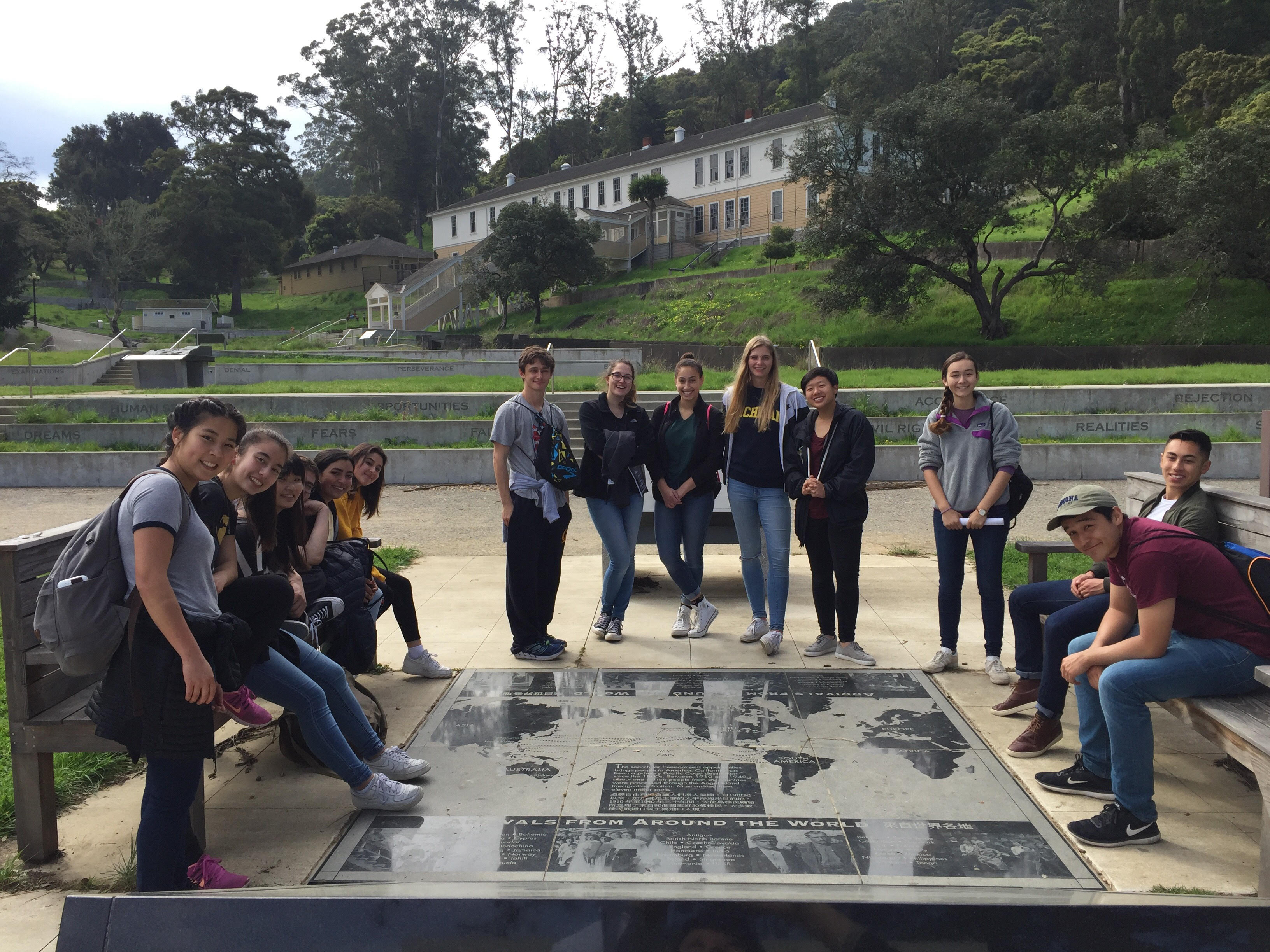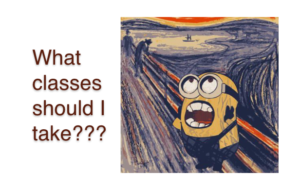On Sunday March 19th, a group of 14 students from Dr. Catherine Fung’s Ethnic Studies Through Literature class and Eileen O’Kane’s Immigration History class took a field trip to Angel Island.
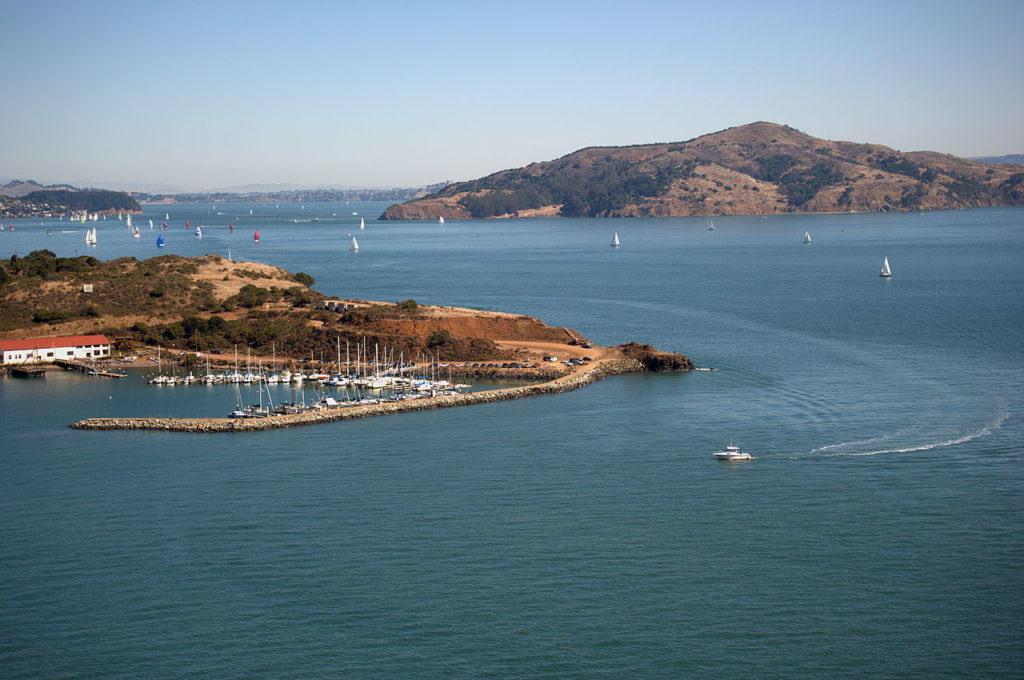
From 1910 to 1943 Angel Island was the first stop for many immigrants who came to America from the West seeking new opportunities. Immigrants arrived who hailed from 89 different countries; however, the majority of the immigrants processed at Angel Island were from China or Hong Kong. The length of stay for detainees was often unpredictable; an average stay varied from two days to two years. Approximately one million immigrants were processed at Angel Island and only 75% to 82% of these individuals entered America successfully. The immigration station closed down in 1943 when Congress repealed the Chinese Exclusion Act.
Lick students in the Immigration class are currently working on a project that focuses on Chinese immigration to the Bay Area. Students in Ethnic Studies have been focusing on a variety of movements for racial and social justice as well as solidarity including the Black Panther Party and the Third World Liberation Front. Kiera Collins ’17, a member of the Ethnic Studies class, said “We went to Angel Island because of its significance in Chinese American history. We’ve also been reading Homebase by Shawn Wong; Wong’s protagonist travels to Angel Island in order to find a piece of his identity and to learn more about his history. Dr. Fung really wanted us to get a feel for the actual location as well as the Chinese American experience there.”
Ethnic Studies is a term that comes from the student struggles in the 1960s and the Third World Liberation Front Movement. Students, faculty, and community activists demanded for equal access to education and curriculum that wasn’t solely from the Eurocentric perspective – they wanted newly structured curriculum that would embrace both the history and culture of people, as well as more faculty members that are people of color.
Fung studied Ethnic Studies in college and worked in ethnic studies while earning her Ph.D in English Literature. When she began teaching at Lick she wanted to design a class explicitly devoted to ethnic studies; she went on to create her senior seminar: Ethnic Studies through Literature.

The tour of the immigration station was led by Marian Seiki, a friend of Fung’s and a volunteer tour guide at the island. “The coolest opportunity we had was our tour guide,” Fung explains. “Her mother actually came through Angel Island and her husband’s dad was actually born in an internment camp in Arizona. She gave us an idea of history as living and breathing; we can’t forget that and I think that was ultimately the biggest takeaway of this trip.”
Seiki explained the injustices suffered by the immigrants at the Angel Island station and the horrid conditions in which they were housed. For example, individuals — except for children under the age of 12 who got to stay with their mothers — were split by race and gender at the station and would never see their loved ones until they were permitted to leave Angel Island; the spending money allocated to detainees to buy necessities, for example a bunk bed mattress, depended on their race. Asians were considered of the lowest class and only received 11 cents, while Europeans were considered superior and received 12 to 13 cents. Living areas were crammed; a three-layer bunk bed slept six individuals. Each tier for two was narrow, half the width of a standard twin bed; the majority of people didn’t have mattresses for the first two years because they didn’t have sufficient money to buy them. Instead they slept on the tough grate-like metal bed frame.
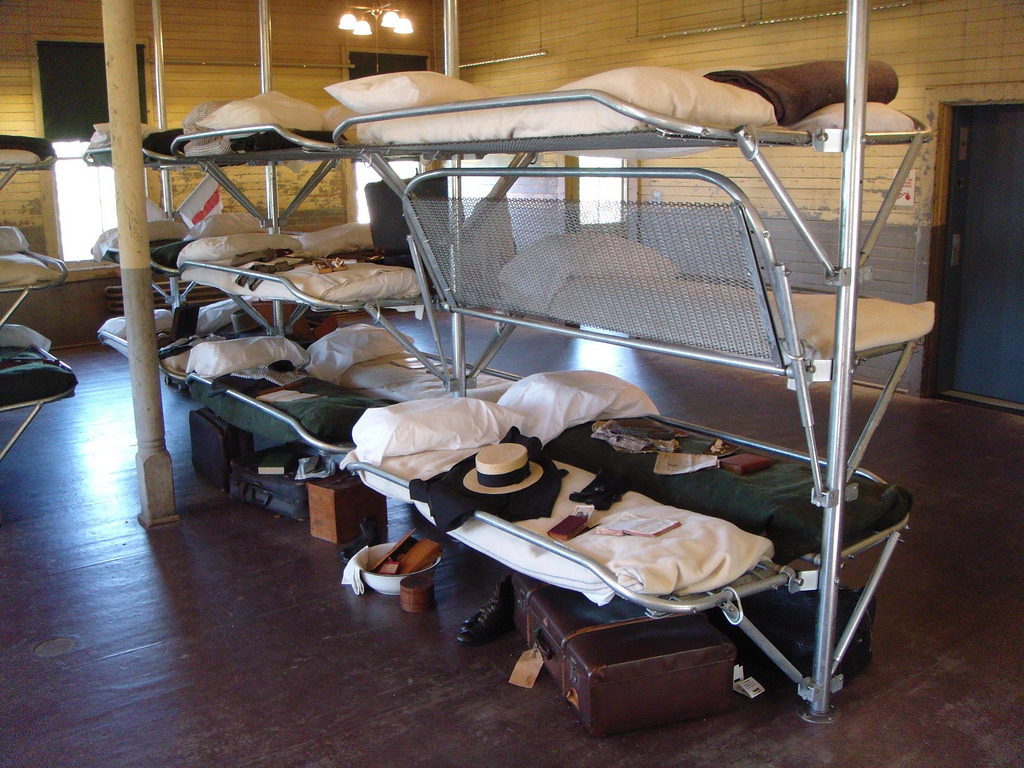
In addition to explaining the history of the island and the buildings, Seiki also shared the story of her mother’s detainment on the island when she arrived in the United States from China at the age of 17. Seiki explained how her mother was interrogated for nearly three days and that the transcript of her interrogation was over 40 pages long. To highlight the intensity of the interrogation process Seiki replicated it with a couple that joined the students on the tour. The scene Seiki constructed mimicked one that would have happened on Angel Island; the immigration officers aren’t sure if the two are actually a couple and are skeptical about the wife. If both members of the couple don’t have the same exact responses when questioned, the wife will be deported off the island and sent back to her home country. Some of the questions asked included: How many windows are in your home? How many steps are there to get to your front door? And what type of flooring is used in your living room? The couple on the tour only gave the same response for two of the five questions, meaning the wife would have been deported.
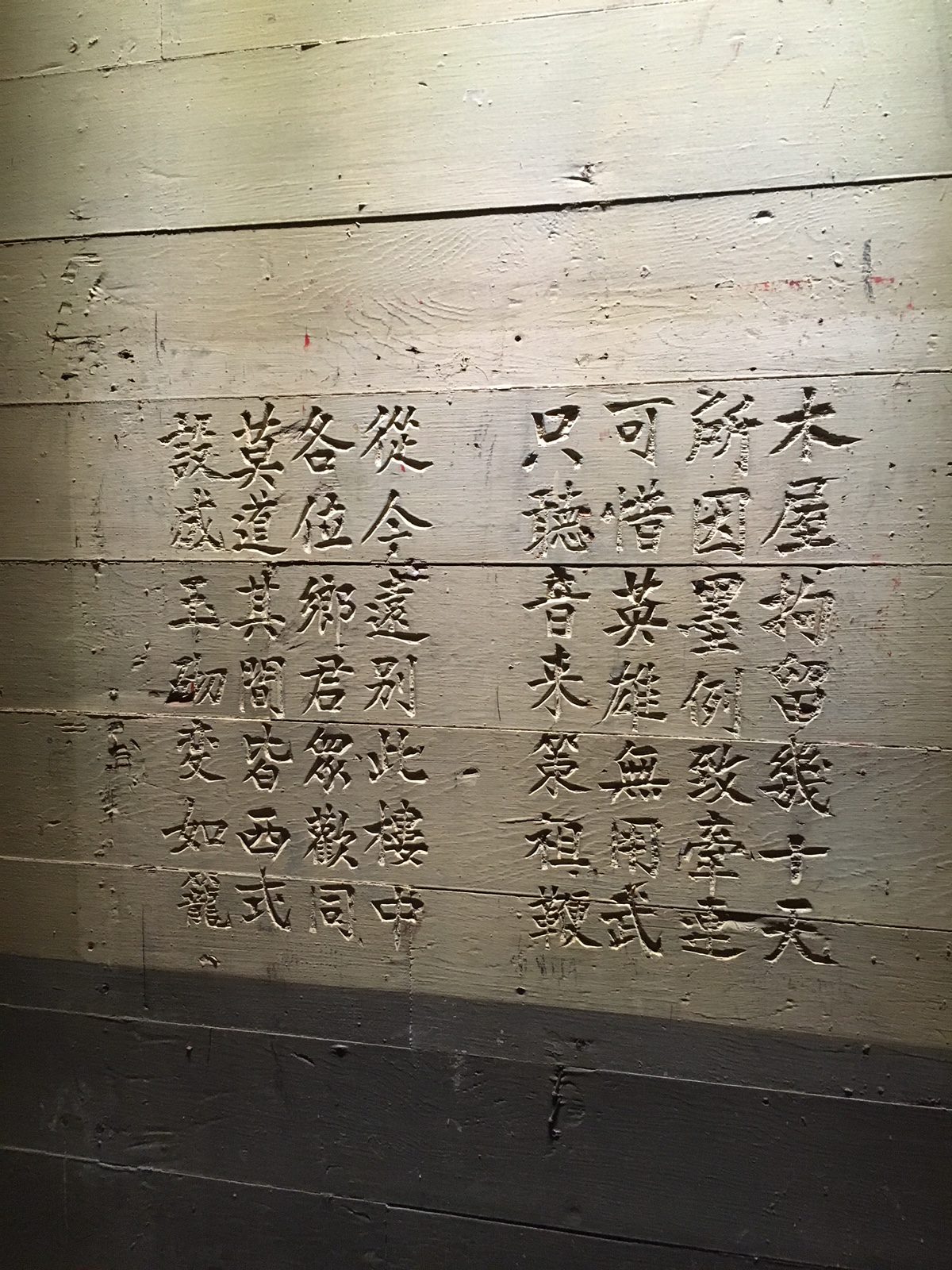
After hearing stories about the journey of immigrants and getting to tour the station where immigrants stayed, students thought the field trip was a powerful experience. Alana Leventhal ’17 states, “My great grandmother, emigrating from Japan, was actually processed at Angel Island and by being there in person, I was able to gain a better understanding of her experience, feel more connected with my history, and appreciate what she went through to provide better opportunities for her family.” Many students, like Leventhal, felt the trip allowed them to learn more about their personal history, and those whose families didn’t come through Angel Island felt like that the trip encouraged them to learn more about the history of both their peers and themselves.
The ultimate goal of the field trip, as stated by Fung, was to “get kids here to get to know San Francisco and the Bay Area better; to understand that this history is right in our backyard. That all of these struggles — like the Black Panthers’ — are extremely local. It’s interesting how many of students haven’t been to Angel Island or didn’t even know that the immigration station was there. To me, it’s all about being on the land firsthand and seeing where all of this history happened.”




